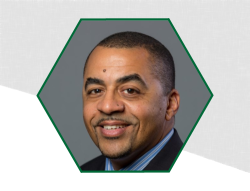Metal powder-bed fusion (PBF) additive manufacturing (AM), while continuing to play an important strategic role across a diverse application space, still lacks the necessary control to obtain parts that meet strict performance-driven criteria for qualification and certification. Here, a new science-based approach is described which can address this shortcoming and fundamentally transform metal PBF AM through development of a modeling and experimental framework. Using this framework new materials and local part properties can be realized, thus enabling more flexible metal-based AM design capabilities compared to those that are currently available today.
The new approach is based on optimization of processing strategies and alloy design to develop suitable pathways to meet AM performance requirements. Carefully designed and simulation-driven alloys and laser beam sources are developed to produce tailored materials through optimization of microstructure and morphology. Examples include modification of Ti-based alloys and use of non-Gaussian laser beam sources to drive columnar-to-equiaxed transitions, and multi-laser approaches to tune residual stress in steel alloys. In situ process monitoring combined with predictive thermal and microstructure models is shown to enable management and manipulation of heat input and evolution (i.e., thermal history) during AM processing to achieve spatially resolved (i.e., voxel-level) microstructure and materials properties design.
Realization of this approach requires understanding and control of the effects that currently limit AM material fidelity: microstructure, residual stress, micro-roughness, and porosity. We will illustrate ways in which the critical gap between powerful, high-performance computer-based predictive modeling, custom laser source development, and materials design can be addressed. A âdigital twinâ modeling framework is used to help bridge this gap and includes a complete description of the laser-matter interaction physics within finite element hydrocode simulations coupled to cellular automata grain growth models grounded by phase field simulations. The impact of this project to LLNLâs AM design capabilities, and those of the broader scientific community, are continuing to be realized, extending the AM design space from defect-prone macroscale geometries to tailored control of local microstructure and properties. Prepared by LLNL under Contract DE-AC52-07NA27344.
Keywords
- Additive Manufacturing
- Alloys
- Beam Shaping
- Microstructure
- Residual Stress

